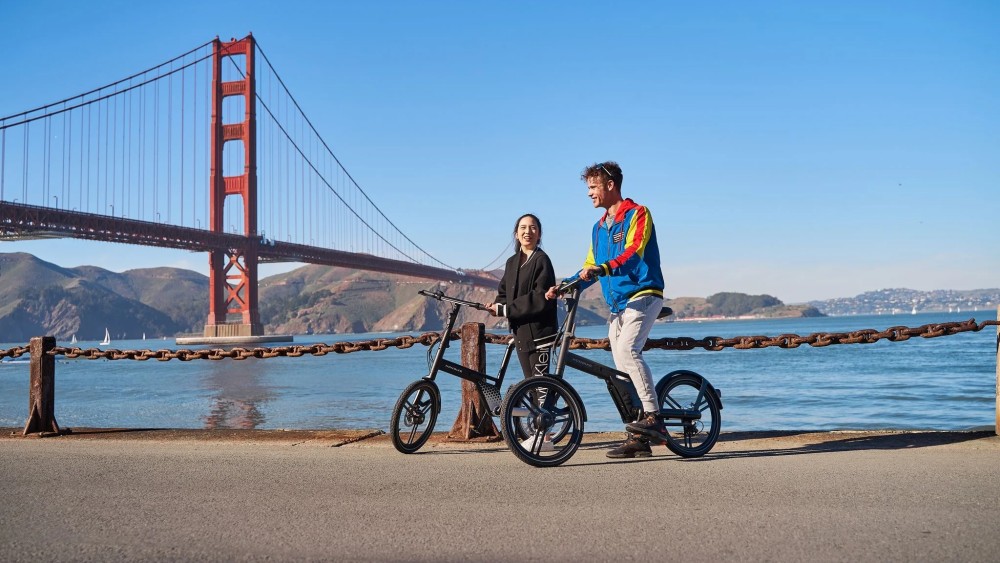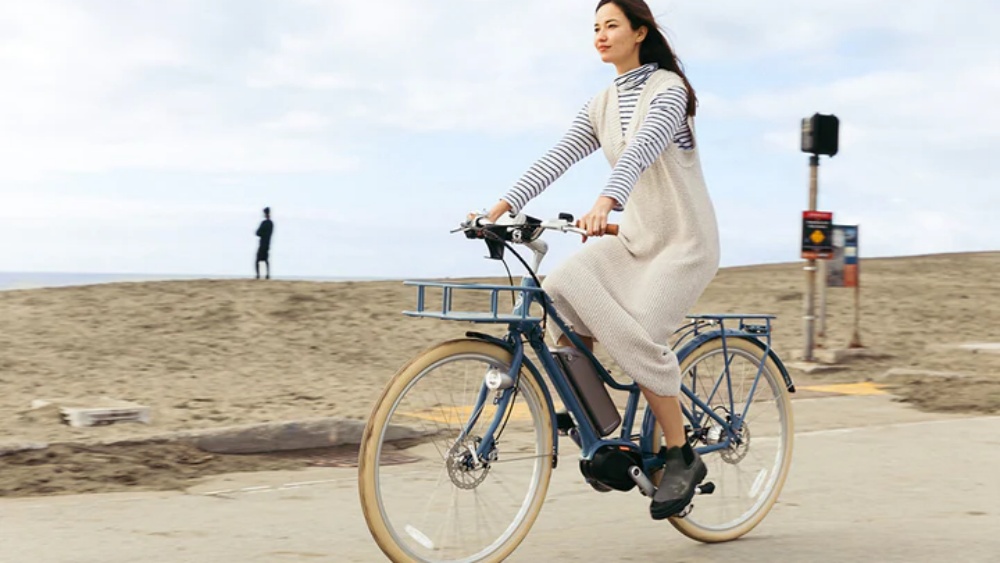10 Quick Tips for Buying an EBike
Buying your first electric bike can be overwhelming. We’re going to help you cut to the chase with these 10 quick tips to help you buy the perfect e-bike for your needs.
We’ve put together 10 quick tips to help you make an informed choice when buying your next e-bike – whether you want a smooth ride around town or a more powerful off-road adventure at the weekend.
1. Choose the e-bike category that’s right for you
The three e-bike categories are defined by their maximum assisted speed and whether or not they have a throttle.
Category 1: E-bikes with pedal assist only, no throttle, and a maximum assist speed of 20 mph.
Category 2: E-bikes that also have a maximum speed of 20 mph, but with throttle assistance. By using the throttle, you can ignore the pedals and manually accelerate the motor to help propel yourself forward without expending energy.
Category 3: Pedal-assisted e-bikes only, without a throttle, but travelling at speeds up to 28 mph instead of only 20 mph like the first two categories.
The category of e-bike you choose will depend on your needs and preferences.
If you want to ride fast, consider a Class 3 e-bike. If you want the added benefit of pedal assist and don’t mind putting in some effort yourself, then a Class 1 will be your best bet.
If you’re looking for a purely recreational e-bike, or if you just need an e-bike that lets you get around town with ease, then a Level 2 e-bike may be just what you need.

2. Choosing the right type of e-bike
There are several types of ebikes available, each designed for a different style of riding. Commuter or folding e-bikes are ideal for those who want an e-bike for short urban commutes or city rides.
If you are looking for a bike that can cope with a variety of terrains, a wide tyre or hybrid e-bike is recommended. For vehicles that can handle heavy off-roading, such as steep inclines or downhill rocky trails, a mountain e-bike is a must.
For cyclists who want a sporty ride, city/street ebikes are lightweight and fast. Additionally, cargo ebikes have heavier, thicker frames that allow riders to transport heavier loads as needed.
The style of e-bike you choose should reflect how you will use it. For example, if you want to use your e-bike to go grocery shopping, you’ll want a cargo e-bike with a heavier frame and plenty of storage capacity.
3. Choose pedal assist, throttle or both
Pedal assist and throttle are two different ways to control the power sent to your e-bike’s motor. Pedal assist works by detecting when you step on the pedals and then automatically increases the power to the motor to help you move forward. Throttle works by letting you press buttons directly on the handlebars (or simply twist them) to control speed.
The main difference between these two types of e-bike features is that with a throttle, you can ride without pedalling at all. However, with a pedal-assist e-bike, you still have to step on the pedals to get the motor started and help you move forward.
4. Determine if you need a mid-mounted motor or a hub motor
The main difference between the two types of ebike motors is that the hub motor is located on the rear wheel, while the mid-drive system is located inside the frame.
Hub motors are cheaper and easier to maintain, but they are not as efficient as mid-drive systems. Mid-drive bikes are more expensive, but they also offer more torque and power than hub motor models and have a longer range.
It’s important to consider the pros and cons of each motor when choosing the ideal model for you.
5. Understand the difference between a pedalling frequency sensor and a torque sensor
Torque sensing and pedalling frequency sensing are the two main forms of pedal assist systems (PAS). Frequency sensors measure the number of times you pedal per minute, while torque sensors measure how hard you pedal.
Although torque sensors are more expensive than frequency sensors, they use fewer batteries and provide a more realistic riding experience that is synchronised with your movements. Pedalling sensors are easier to install and therefore cheaper than e-bikes with torque sensing. However, they are less efficient when climbing hills and are therefore more suited to recreational, flat terrain riders who don’t need the extra power provided by torque sensing.
6. Choosing the right battery range and power
The battery range and power of an e-bike are two of the most important factors to consider when making a purchase. If you intend to travel long distances on your e-bike, you will need a model with a long battery life.
Battery range is affected by the weight the bike carries, the terrain and the riding style. The more you rely on your e-bike’s motor for power, the more power the battery will consume.
But the more battery capacity you have, the more distance you can travel between charges.
A good rule of thumb for determining how much power you need is to consider what kind of riding you plan to do. If you’re planning a long ride in the mountains, then choose a bike with more power.
On the other hand, if you’re just going to be using your e-bike around town or on flat terrain, then less power will suffice.
7. Consider the ideal e-bike weight
The weight of your e-bike is an important factor in determining how much work you need to do while riding. A heavier bike requires more effort from your muscles and tendons, while a lighter bike allows you to pedal with less effort. That said, a heavier e-bike may have a more powerful motor and battery.
E-bikes range in weight from 18 lbs to 70 lbs, but standard e-bikes (including motor and battery) most commonly weigh around 45-55 lbs. This can vary depending on the type of motor used, but keep this number in mind when shopping if you’re looking for a sturdy and easy-to-operate motor.
8. Know your e-bike’s service and maintenance requirements
Service and maintenance are very important to the long-term health of your e-bike. All e-bikes require regular maintenance, but the frequency will vary by manufacturer.

Most manufacturers recommend servicing your bike every 500 to 1,000 miles, and some require more frequent servicing depending on the type of riding you do (e.g., if you commute in heavy traffic or ride off-road).
If you’re not sure if your model needs servicing, check its owner’s manual or contact the manufacturer directly before taking it to an authorised dealer for a tune-up.
9. Check your budget
E-bikes come in all shapes, sizes and prices. While some high-end e-bikes cost thousands of dollars, many inexpensive e-bikes cost less than $1,000.
In general, the more money you spend, the better quality bike you get. More expensive models tend to be lighter, have longer battery life, and offer more features than cheaper models.
The key to finding a good electric bike is to do your research and make sure you buy from a reputable manufacturer. It also depends on the features and specifications of the e-bike you want and how much you are willing to spend.
10. Familiarise yourself with e-bike warranties
The length of the warranty is an important consideration when buying an e-bike. Most manufacturers offer a 1 or 2 year warranty on their products, but it’s important to note that this doesn’t always cover wear and tear or mechanical failure.
Before riding your new bike for the first time, be sure to read the manufacturer’s instructions carefully so you know how to operate it safely and reliably. Also, keep track of all maintenance records and any parts replaced during repairs, as this will help make filing a claim easier later on.
Warranty coverage varies greatly from manufacturer to manufacturer, so make sure you know exactly what type of warranty you have before purchasing your e-bike.
Buying an e-bike is much easier when you know what to look for. By following the top ten tips above, you can easily find the right product for your needs, budget and lifestyle.
Fill in the information below now and let our well-designed City Electric Bike and quality outdoor accessories take you on a journey to explore nature and unleash your passion for unlimited adventure!
 shuangye outdoor products
shuangye outdoor products
